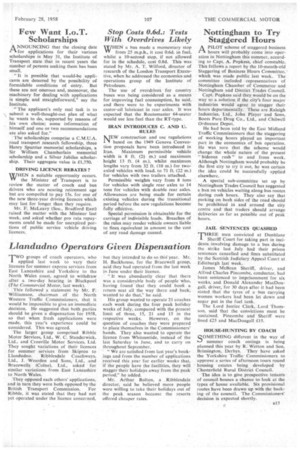Stop Costs 0.6d.: Tests With Overdrives Likely
Page 49

If you've noticed an error in this article please click here to report it so we can fix it.
WHEN a bus made a momentary stop Vif from 25 m.p.h., it cost 0.6d. in fuel, whilst a 10-second stop, if not allowed for in the schedule, cost 0.8d. This was stated by Mr. A. T. Wilford, director of research of the London Transport Executive, when he addressed the economics and operations group of the Institute of Petroleum.
The use of overdrives for country buses was being considered as a means for improving fuel consumption, he said, and there were to be experiments with castor-oil lubricant in rear axles. It was expected that the Routemaster 64-seater would use less fuel than the RT-type.
IRAN INTRODUCES C. AND U. RULES
NEW construction and use regulations based on the 1949 Geneva Convention proposals have been introduced in Iran. Maximum permissible vehicle width is 8 ft. (21 m.) and maximum height 13 ft. (4 in.), whilst maximum lengths vary from 32 ft. (10 in.) for twoaxled vehicles with load, to 71 ft. (22 m.) for vehicles with two trailers attached.
Permissible weights vary from 8 tons for vehicles with single rear axles to 14 tons for vehicles with double rear axles. Allowances are being made for certain existing vehicles during the transitional period before the new regulations become fully effective.
Special permission is obtainable for the carriage of indivisible loads. Breaches of the rules may render vehicle owners liable to fines equivalent in amount to the cost of any road damage caused.




















































































































